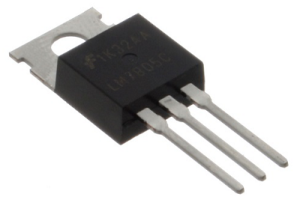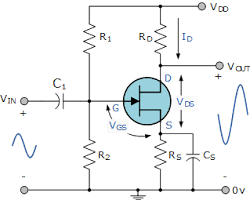
Understanding MOSFETs: Symbol, Applications, and Comparisons
September 25 2023  1219
1219
Inquiry
Global electronic component supplier AMPHEO PTY LTD: Rich inventory for one-stop shopping. Inquire easily, and receive fast, customized solutions and quotes.
QUICK RFQ
ADD TO RFQ LIST
Welcome to our in-depth analysis of MOSFETs, where we discuss their terminology, uses, and similarities to other kinds of transistors. This blog will give you useful insights into the world of MOSFETs, whether you're an electronics geek, an airsoft fan, or just inquisitive about semiconductor devices. We'll go through everything, from the fundamentals of MOSFET symbols and pinouts to how they're used in airsoft weapons and amplifiers. We'll also contrast MOSFETs with other common transistor types, such as BJTs, IGBTs, and JFETs, and discuss issues like diode-connected MOSFETs, FinFETs, and effective MOSFET testing. So let's get started!
What is a MOSFET airsoft?
MOSFETs (Metal-oxide-semiconductor field-effect transistors) are one of the most significant categories of transistors. A MOSFET has four terminals: the source (S), gate (G), drain (D), and body (B). The source terminal of a field-effect transistor is typically connected to the body of a MOSFET, creating a three-terminal device. Typically referred to as a transistor, MOSFET is used in both analog and digital circuitry. They are found in many different types of electronic equipment, including computers, cell phones, and automobiles. MOSFETs are relatively straightforward electronics, yet they have the potential to be incredibly strong and effective.
MOSFET Structure and Symbol

What is a MOSFET used for?
- Switching Applications: One of the main applications for MOSFETs is switching. MOSFETs have the ability to function as electronic switches, regulating the current flow in a circuit. They can quickly turn on and off, which enables them to precisely and effectively control the flow of electricity. In power supply, motor control circuits, LED drivers, and other situations where efficient switching is necessary, MOSFETs are frequently utilized.
- Amplification: MOSFETs are also capable of being used for amplification. The MOSFET can be used to control a larger output current or voltage by supplying it with a tiny input voltage or current at the gate terminal. This qualifies MOSFETs for use in RF amplifiers, audio amplifiers, and other applications requiring signal amplification.
- Power Electronics: MOSFETs are widely utilized in power electronics applications because of their capacity to tolerate high voltages and currents. Power supplies, voltage regulators, inverters, and motor control circuits are popular places to find them. In power conversion applications, MOSFETs' low on-resistance cuts down on power losses and boosts overall efficiency.
- Digital Logic Circuits: MOSFETs serve as the fundamental components of digital logic circuits. They are used in integrated circuits (ICs) to make logic gates, such as AND, OR, and NOT gates, which are the cornerstone of digital systems. Key elements of microprocessors, memory chips, and other digital devices are MOSFET-based logic gates.
- Radio Frequency (RF) Applications: MOSFETs are frequently employed in radio frequency (RF) applications, including RF amplifiers, radar systems, and wireless communication systems. High-frequency operation is possible, and they perform quite well in terms of gain, linearity, and power handling.
- Solar Energy Systems: MOSFETs are essential components of solar energy systems, notably solar inverters. Direct current (DC) produced by solar panels is converted by solar inverters into alternating current (AC), which can be utilized to power buildings. In the power stage of the inverter, MOSFETs are employed to effectively convert and regulate the flow of electricity.
- Automotive Applications: MOSFETs are widely employed in-vehicle electronics, according to applications. They can be found in a number of systems, such as powertrain control modules (PCMs), motor control systems, lighting systems, and engine control units (ECUs). In automotive applications, MOSFETs offer the effective switching and high power handling capabilities needed.
MOSFET amplifier
Due to their high input impedance, low output impedance, and great linearity, MOSFETs are frequently employed in audio amplifiers. A number of amplifier circuits can be constructed using MOSFETs. The common-source amplifier is one popular variety of MOSFET amplifier. Below is a diagram of the common-source amplifier:
MOSFET Applications in Airsoft Guns
Airsoft weapons use MOSFETs (metal-oxide-semiconductor field-effect transistors) to increase performance and dependability. The trigger reaction, rate of firing, and motor wear and tear can all be improved by controlling the current flowing to the motor with MOSFETs. Here are some of the specific benefits of using MOSFETs in airsoft guns:- Increased trigger response: MOSFETs can shorten the time between pulling the trigger and the pistol firing. This is due to the fact that MOSFETs are far faster than conventional mechanical switches at turning the current to the motor on and off.
- Increased rate of fire: MOSFETs can make the motor operate more quickly, which will improve the gun's rate of fire.
- Reduced wear and tear on the motor: By restricting the amount of current that can pass through the motor, MOSFETs can aid in reducing motor wear and tear. This is crucial for powerful airsoft weapons since they can put a lot of strain on the motor.
- Increased battery life: MOSFETs can increase battery life by cutting down on the power that the motor uses.
Diode-Connected MOSFETs
A MOSFET that has a diode connected in series across the drain and source terminals is referred to as a diode-connected MOSFET. When the reverse voltage is provided, the diode stops the MOSFET from turning on. In motor control circuits, diode-connected MOSFETs are frequently utilized to shield the MOSFET from reverse voltage spikes. In some power supply circuits, they are also utilized to create a low-impedance path for the current to flow when the MOSFET is off. Here is a diagram of a diode-connected MOSFET:
MOSFETs vs. BJTs
BJTs are bipolar junction transistors, which implies that the current passing through the base terminal regulates the flow of current between the collector and emitter terminals.- Structure: MOSFETs are majority carrier devices, which means that their conduction depends on the movement of the majority of charge carriers (electrons or holes). BJTs, on the other hand, rely on both majority and minority charge carriers, making them minority carrier devices.
- Voltage Control: MOSFETs are voltage-controlled electronic devices in which the channel conductivity is governed by the gate voltage. BJTs are current-controlled electronics in which the collector current is controlled by the base current.
- Power Efficiency: Because of their low on-resistance and insignificant input current, MOSFETs often have superior power efficiency than BJTs.
- Switching Speed: MOSFETs are more suited for high-frequency applications than BJTs due to their quicker switching speeds.
- Noise Immunity: Due to their high input impedance, MOSFETs are more noise-resistant than BJTs, which are more sensitive to noise.
IGBTs vs. MOSFETs
IGBTs are a combination of MOSFETs and BJTs. They combine the finest qualities of both types of transistors: the high input impedance and quick switching of MOSFETs with the high current gain of BJTs.- Voltage and Current Handling: IGBTs are better at handling voltage and current levels than MOSFETs, which makes them suited for high-power applications.
- Switching Speed: IGBTs are more effective for high-power applications because of their reduced switching losses despite MOSFETs' quicker switching speeds as compared to IGBTs.
- Gate Drive Requirements: IGBTs need greater gate drive voltages than MOSFETs do, which has an impact on how sophisticated the control circuitry must be.
- Cost: Compared to IGBTs, MOSFETs are often more economical.
JFETs vs. MOSFETs
Junction field-effect transistors, or JFETs, are managed by the reverse voltage provided to the gate terminals. Due to the depletion region this reverse voltage in the channel causes, the device's current flow is reduced.- Structure: Since JFETs are depletion-mode devices, they are typically ON and need a reverse bias voltage to regulate the channel conductivity. Enhancement-mode or depletion-mode MOSFETs are both possible.
- Voltage Control: JFETs are voltage-controlled electronics that work in a similar manner to MOSFETs in that the gate voltage determines the conductivity of the channel.
- Input Impedance: JFETs are suitable for applications requiring high input impedance since they have a larger input impedance than MOSFETs.
- Noise Performance: Due to their lower gate leakage current than MOSFETs, JFETs typically operate noisier than those devices.
FinFETs vs. MOSFETs
- Structure: Fin-like channel structures in three dimensions are a feature of the MOSFET class known as FinFETs, which improve channel control and lower leakage current.
- Power Efficiency: FinFETs have better control over leakage current than conventional planar MOSFETs, which results in higher power efficiency.
- Scaling: More scalable than planar MOSFETs, FinFETs enable further downsizing and enhanced performance in cutting-edge semiconductor technologies.
- Gate Control: Compared to planar MOSFETs, FinFETs offer better gate control and lessen the effects of short channels.
How to Test MOSFETs?
- Ensure safety: To prevent electrical shocks, make sure to turn off the power supply and discharge any capacitors in the circuit before testing MOSFETs.
- Gather necessary tools: A breadboard or test circuit, as well as a digital multimeter (DMM) with the ability to measure voltage, current, and resistance, are required to connect the MOSFET.
- Identify the MOSFET pins: The gate (G), the drain (D), and the source (S) are the three terminals on a MOSFET. To determine the pin configuration, use the datasheet or the markings on the MOSFET.
- Resistance measurement: Set your DMM to the resistance (ohmmeter) mode to measure resistance. The DMM's positive and negative leads should be connected to the gate and source terminals, respectively. The resistance of a good MOSFET should be high (in the megaohm region) in both the forward and reverse directions.
- Diode mode testing: Set the diode mode on your DMM. Positive and negative leads should be connected to the drain and source terminals, respectively. Measure once more while switching the leads. A good MOSFET should exhibit low resistance (between 0.5 and 1.0V) when biased forward and high resistance (OL or overload) when biased backward.
- Voltage testing: Set up the MOSFET in the desired configuration on a breadboard or test circuit. Measure the voltage at the drain terminal after applying an appropriate voltage to the gate terminal (the datasheet lists the acceptable voltage range). When the MOSFET is in the "ON" state, the drain-source voltage should be close to zero (in the mV range), and when it is in the "OFF" state, it should be close to the applied voltage.
- Current testing: Measure the current that is flowing through the drain-source path while applying a suitable voltage to the gate terminal for current testing. Check to see if the current falls within the datasheet-specified range for the given gate voltage.
- Connect the MOSFET in a test circuit or a breadboard according to the desired configuration.
- Apply the proper input signals or conditions to the gate terminal and watch the circuit's behavior. Verify if the MOSFET is performing its intended function correctly, such as switching on and off, amplifying signals, or controlling current flow.
Conclusion
In this blog, we've explored the world of MOSFETs, covering their symbols, applications, and comparisons with other transistor types. We've discussed the significance of MOSFETs in airsoft guns, their role in amplifiers, and their distinctions when compared to BJTs, IGBTs, and JFETs. Additionally, we've touched upon topics such as diode-connected MOSFETs, FinFETs, and effective MOSFET testing methods. By understanding the fundamentals and applications of MOSFETs, you'll be equipped with the knowledge to make informed decisions when working with these versatile semiconductor devices. So, whether you're an electronics enthusiast, an airsoft hobbyist, or a curious learner, MOSFETs are an exciting and essential component to explore in the world of electronics.Populer Posts
M1A3P250-VQ100I
Microchip Technology
EP2AGX95EF29I3
Intel
1SG250HH3F55I2LG
Intel
5SEEBF45C4G
Intel
EP4SGX110FF35I3N
Intel
5SGXMB6R3F43C3G
Intel
5SGXEA3K2F35I3LG
Intel
EP4CE10E22C6N
Intel
M2GL005S-1VF256
Microchip Technology
EP3C55U484C6
Intel
XC2VP2-5FFG672C
AMD
5SGSMD6N3F45C2G
Intel
